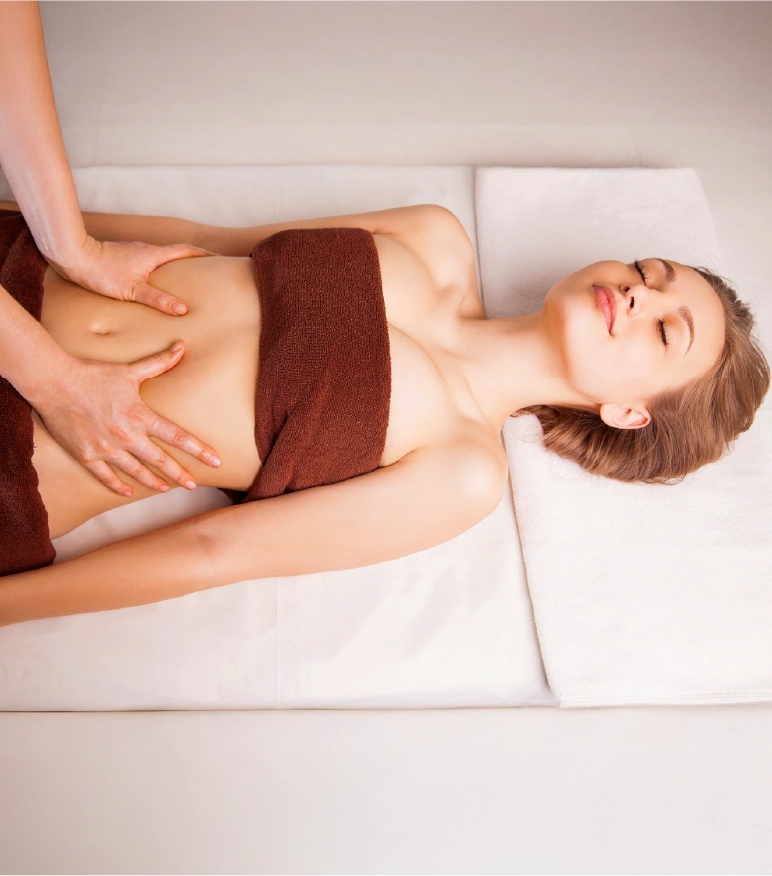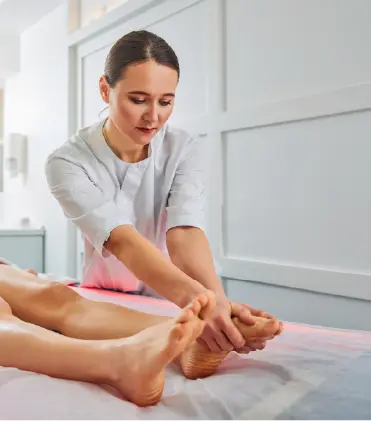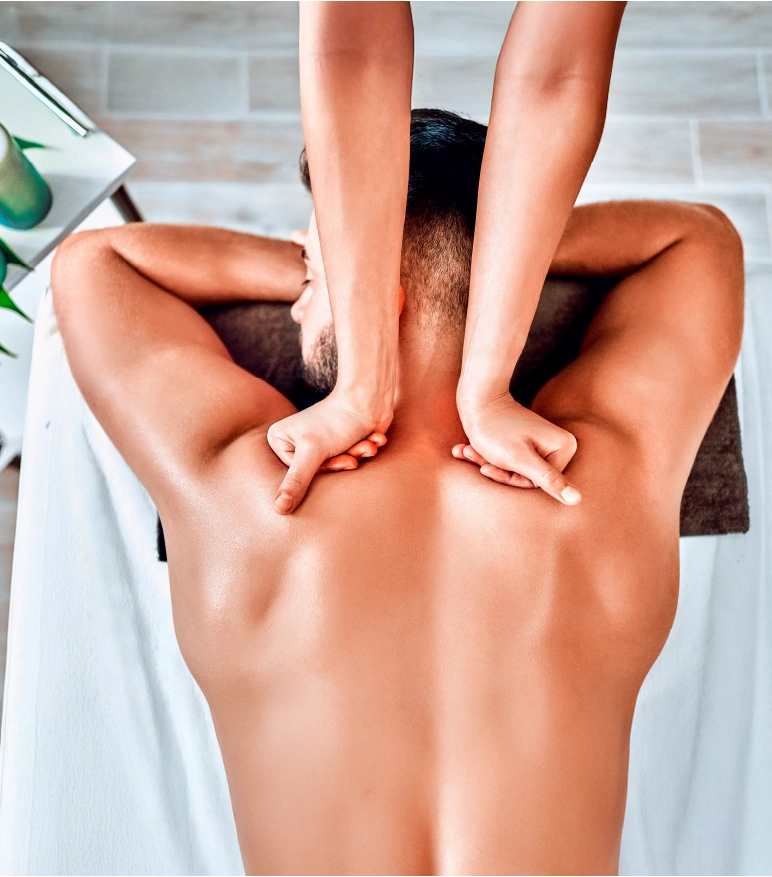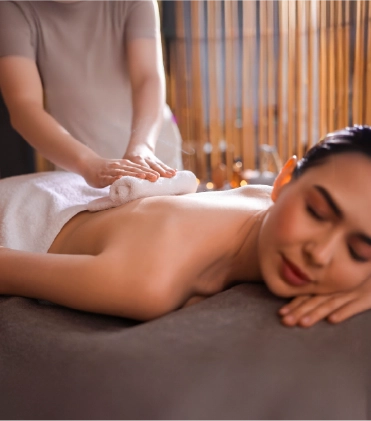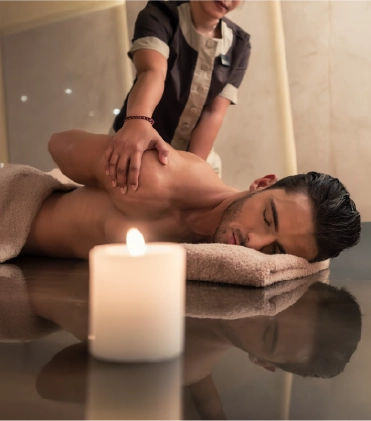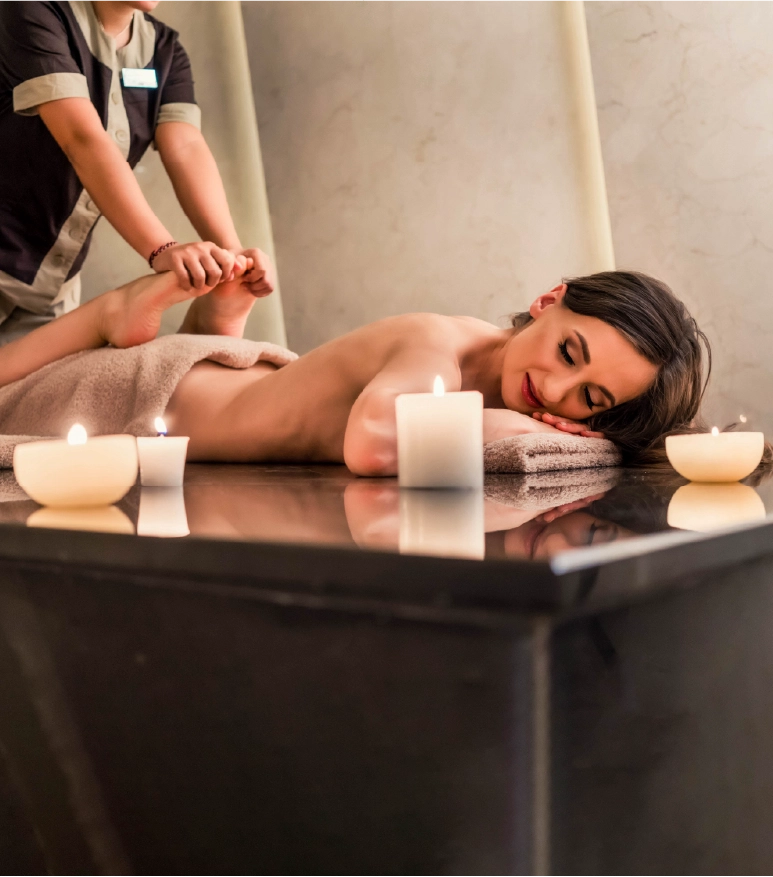What is the Treatment?
Tui Na is a form of Chinese medical massage that helps improve circulation and provides relaxation. In Chinese medicine, the treatment is based on the improvement of the flow of energy or ‘Qi’. The Tui Na massage is the same as the acupuncture technique but in this massage, the therapist uses fingers instead of needles to relieve trigger points that cause pain in the musculoskeletal system. The therapist also uses a variety of hand techniques to stimulate and manipulate the energy flow in the body (Qi). Tui Na massage is commonly used in combination with other traditional Chinese medicine practices like acupuncture and herbal remedies.
Philosophy/Origin
Tui Na massage is a common practice in Traditional Chinese Medicine (TCM) and has been used for more than 2,000 years. It is based on the belief that if the flow of energy in the body or Qi is disturbed or blocked, it can cause illness in the body. So, various techniques are used to remove blockage of the energy so that the root cause of illness can be eliminated. It restores peace by helping the body to heal naturally.
Physical Benefits
Reduces stress and anxiety
Long-Term Wellness
Regular Tui Na sessions can help maintain overall health by balancing Qi and promoting long-term physical and emotional well-being. It also prevents recurring injuries by relaxing muscles and improving the alignment of the body.
Ideal Audience
Tui Na is beneficial for people experiencing chronic pain, muscle stiffness, or stress-related issues. It is particularly helpful for individuals who prefer holistic and non-invasive therapies to manage pain and maintain general well-being. Holistic care not only focuses on the involved area but also treats the patient as a whole to maintain physical and mental health.
Specific Conditions
The treatment of Tui Na massage involves the following techniques
Consultation
The therapist will assess the body to identify energy blockages (Qi blockages) that might be causing discomfort or pain. This assessment guides the therapist to plan a treatment accordingly.
Energy Pathway Stimulation
After the consultation, the therapist performs various techniques to open the blockage of energy in the body. These techniques include kneading, pressing, rubbing, and rolling, which help to improve the flow of Qi (energy) through the body.
Acupressure and Manipulation
The therapist specifically applies the pressure on the specific points in the body to relieve pain and tension. The therapist releases muscle knots and trigger points which provides relaxation. The therapist also performs some manipulation techniques on the joints.
Stretching and Traction
The therapist also uses stretching and traction techniques to further relieve muscle stiffness and improve flexibility.
Here are the most commonly used techniques used in Tui Na massage
What to Expect
During Tui Na, the therapist applies firm pressure and soothing techniques that may feel similar to a deep tissue massage. Some areas may be tender due to the blockage in energy but the pressure remains comfortable throughout the session. Unlike other massages, Tui Na focuses on energy flow, so it may feel more therapeutic.
Immediate Effects
Long-Term Effects
Regular treatments of Tui Na massage can result in long-term pain management and improved energy flow. It promotes emotional balance and mental clarity and also helps in the recurrence of tension-related headaches, muscle pain, and stress.
Before the Treatment
It is better to wear comfortable clothing during the session to avoid any hindrance. It is also recommended to avoid caffeine before the session.
Aftercare
Stretching should be performed to maximize the benefits of each session and to maintain the effect for a longer time. It is also necessary to correct the sleep schedule and follow a balanced diet to maintain physical and mental health.
Tui Na is widely used in areas where traditional Chinese medicine techniques are used to promote holistic care. However, it is important to connect with certified massage therapists with specialized training in TCM and Tui Na techniques for a wholesome experience. Wellencia is a platform that provides consultancy and connects people with the Tui Na massage therapist.




